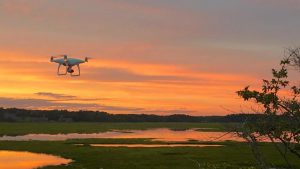The insurance industry is transforming at a bewildering rate and there are changes in the way consumers are purchasing insurance. According to a recent survey of U.S. consumers, more than 32% of all respondents—and 50% of those aged 18–25— said they prefer to work directly with insurance carriers. In today’s world, we are experiencing rapid changes in the amount of data that insurers are gathering and analyzing. The number of internet-connected devices and sensors is projected to reach 50 billion by 2020, which will have a significant impact on the availability of real-time information that insurers can use for better pricing/underwriting. Finally, we can’t forget about drones, which are expected to have a $6.8 billion impact on the insurance industry.Ways that we see drones are impacting the insurance industry.
Drones already play an important part in the insurance claims process
Customer experience is paramount and the ability to shorten the claims timeframe is a crucial part of maintaining competitiveness in the insurance industry. Today, one claims adjuster on site and equipped with a drone can set up an automated flight plan around multiple insured locations; evaluate the properties using sensors, and capture images. According to Cognizant, drone usage is predicted to make claims adjusters’ workflow 40– 50% more efficient. Drones can improve the speed with which customers receive settlements and give claims managers a better sense of where and how many staff should be deployed. There is also less risk involved for claims adjusters, who no longer need to climb ladders or go on roofs to assess damage; by using drones they can remain in a safe area during their assessments.More precise risk management and tailored pricing
One way insurers stay competitive is through policy pricing. Drones can be used to collect information about a property before a policy is issued by capturing data on property features that make it less vulnerable, such as storm shutters. This can facilitate personalized premiums. After all, insurance is all about measuring risk and accurately pricing it.Better data, better catastrophe models
Aerial imagery taken by drones delivers larger quantities and enhanced quality of data from which to develop catastrophe model components and inputs for analysis. As discussed in this blog post, for catastrophe model developers and users there is a mutually beneficial interplay between model development, engineering analysis, and exposure and claims data quality. Improving the feedback loop between underwriters claims adjusters, and model validation can substantially increase a cat model’s performance in quantifying risk.- Lower losses from fraud According to the Insurance Information Institute, fraud compromises about 10% of property and casualty insurance losses and loss adjustment expenses annually, which translates to about USD 32 billion each year. In addition, 57% of insurers predict an increase in this type of fraud by policyholders. How can drones lower the amount of loss from fraud? After an extreme event, it is common for insurance companies to receive numerous claims for damages that existed before the event occurred. By using UAVs prior to an extreme event to capture images of insured properties, companies can protect themselves from such fraudulent claims.
- Drones and artificial intelligence come together Artificial intelligence (AI) integrated with drones will allow for more independent functionality. IBM’s AI system, Watson, is able to automatically process aerial imagery, assess hail damage, and calculate damage extent. Drones integrated with AI will provide an end-to-end solution that will allow for an expedited claims process, reduction in costs, and an increase in customer satisfaction.

